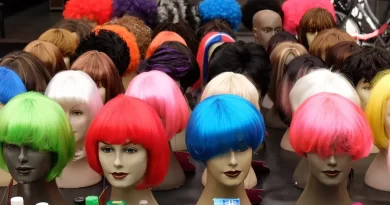4 Types of Dresses Everyone Should Know
According to surveys, the average woman owns between 77 and 155 dresses. Some even claim to have 300+ pieces in their wardrobe!
If you don’t own that many, don’t worry; ideally, you only need at least 2 to 3 pieces of four primary types of dresses, anyway.
The guide below details the primary dress types every woman should own, so read on.
1. Casual Dresses
The casual dress type is a relaxed and informal garment for everyday use. It prioritizes comfort and function, making users worry less about clothing mishaps.
So it’s also no wonder that more employers have embraced casual dress codes. Indeed, a previous survey found that 88% of employers let employees wear a casual dress once a week. Half even said they let their people wear such garments every workday.
Some examples of casual dress types are A-line, pouf, pinafore, smock, maxi, and midi dresses.
The best casual dresses also consider the season for maximum comfort and function. For example, summer dresses use lightweight fabrics like cotton, jersey, linen, and silk. For winter wear, casual dresses made of cotton, cashmere, wool, or fleece are wise choices.
Depending on what you wear casual dresses with, you can use them for various occasions. For example, if you wear them with sneakers, they’re perfect for a trip to the mall. But if you wear them with leather slip-on shoes, they make for excellent office attire.
2. Formal Business Dresses
Formal business dress types are fancier than the casual dresses you’d wear to work. They exude professionalism and are, thus, worn in strict office environments. They’re also the most appropriate attire for award ceremonies and corporate dinners.
Another characteristic of formal business dresses is that they’re usually knee-length. They can sit just above the knee but no more than an inch higher. Blazer dresses and pencil dresses are some examples.
3. Formal Dresses
Formal dresses are garments you wear for the fanciest events you’ll ever attend. Think short or long sleeve bridesmaid dresses, full-length ball gowns, and evening gowns. You wear them for formal occasions like weddings, balls, christenings, and confirmations.
What makes formal dresses “formal” is their length and fabric. Typically, they’re floor-length and made of chiffon, lace, organza, satin, silk, or velvet.
4. Semi-Formal Dresses
Semi-formal dresses are more relaxed than ceremonial dresses but are fancier than casual. Like the formal type, they feature luxurious fabrics like lace, satin, or silk. However, a chief difference is their length; semi-formal dresses can have shorter hemlines.
Sheathe, peplum, midi, and tea-length dresses are some examples of semi-formal dresses. Shorter black dresses also work, as long as they exude a classy appearance.
Time to Own These Types of Dresses
Now you know that the primary types of dresses are casual, business, formal, and semi-formal. At the very least, aim for 2 to 4 of each, but you can own a bit more of the casual type, especially if that’s what you wear to work.
Did you like this informative guide? If so, we have more educational reads to share, so be sure to browse the rest of our latest blog posts now!




